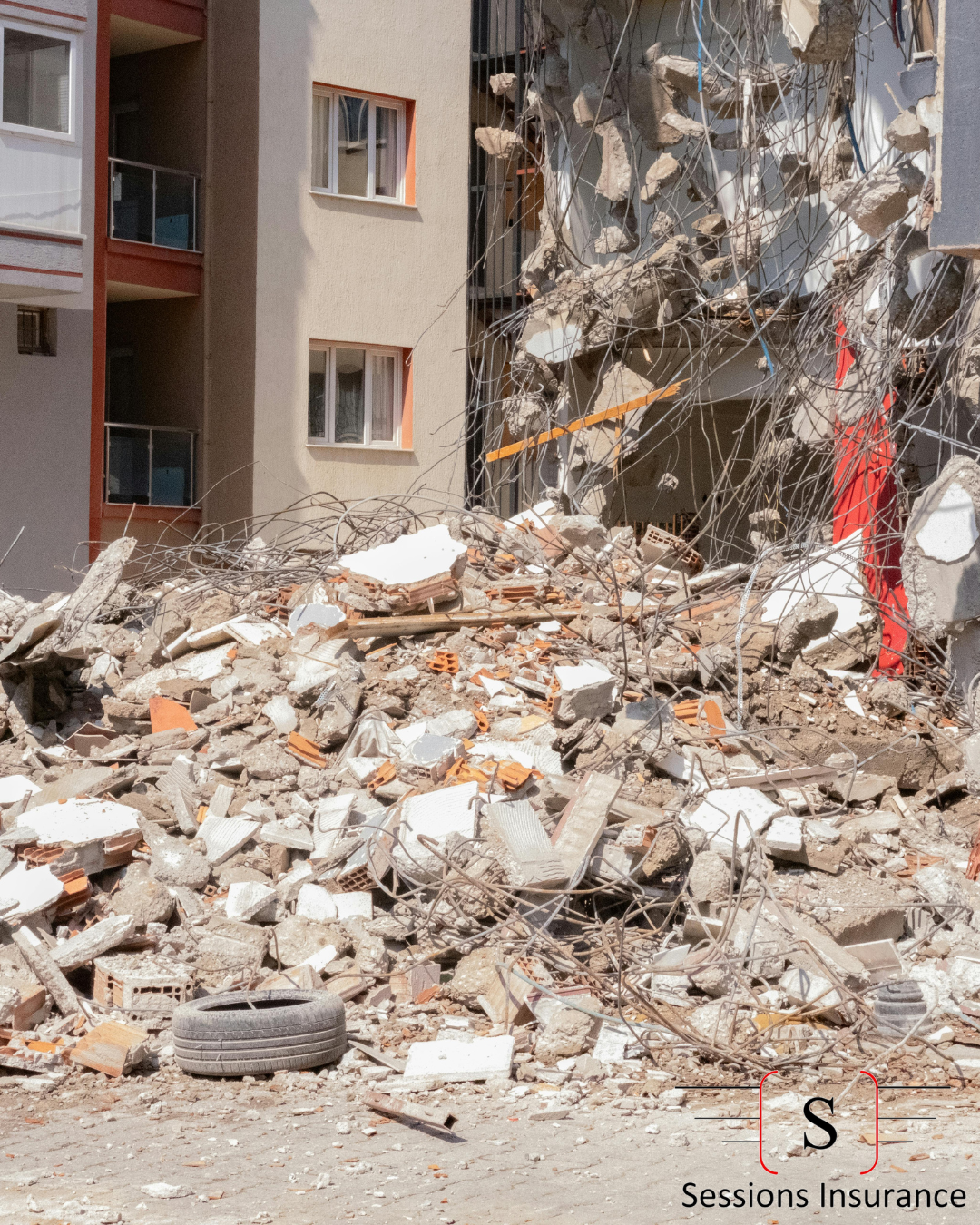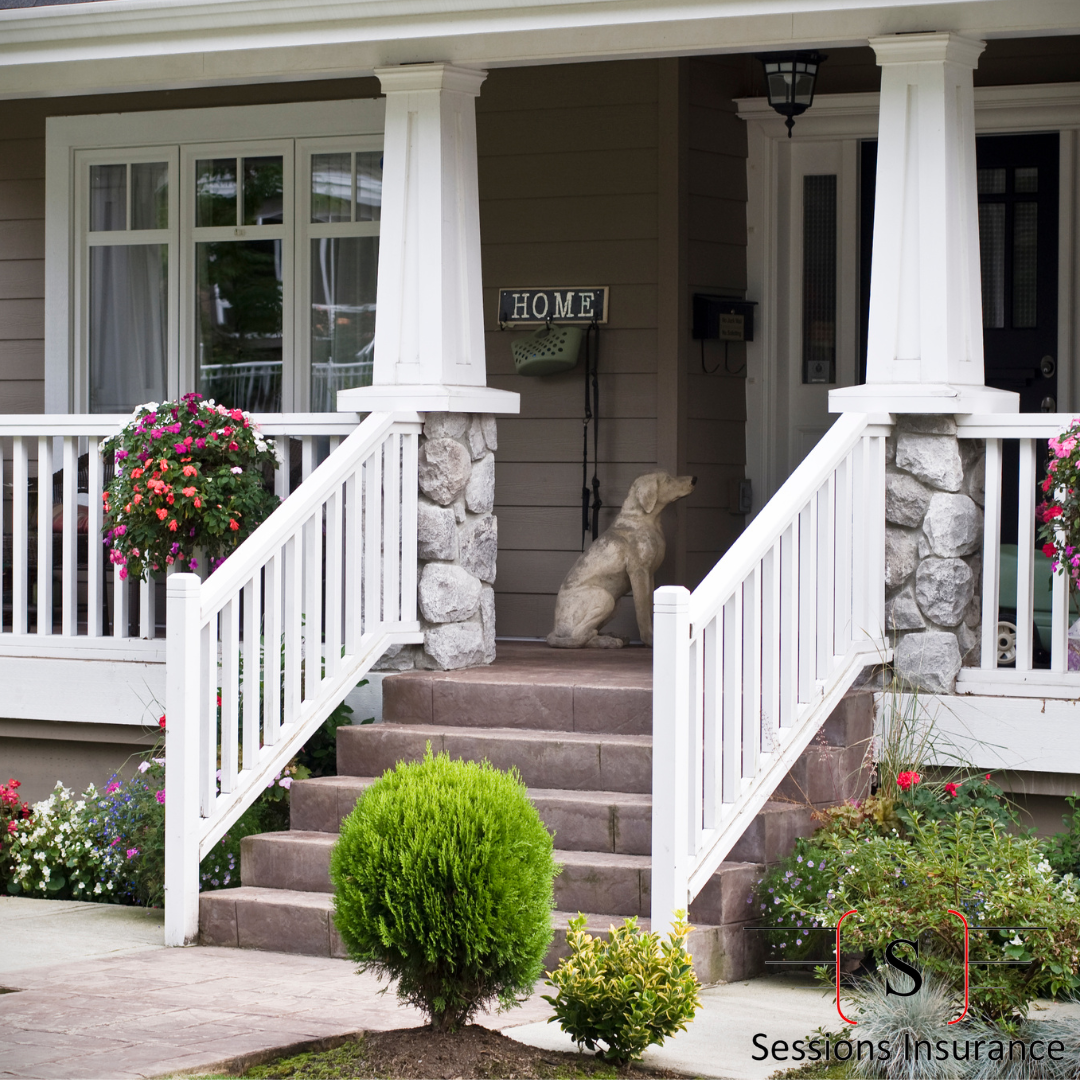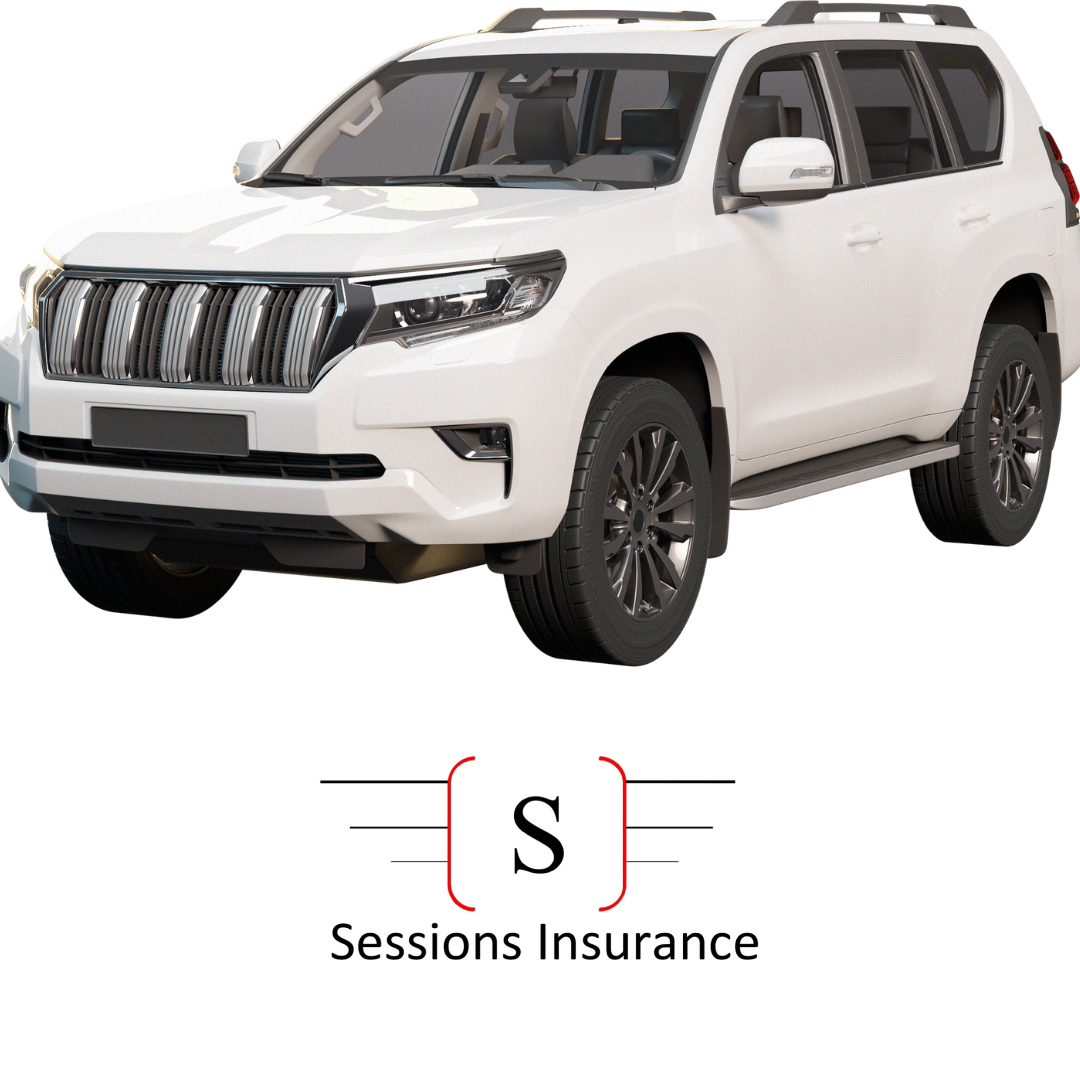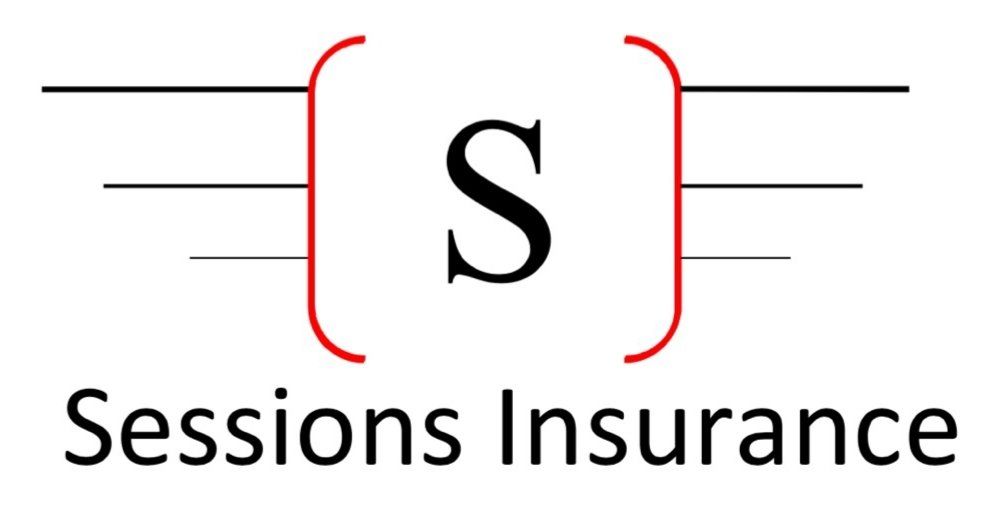By Haydn Sessions
•
December 9, 2025
Utah Earthquake Insurance: Why It Matters and How Sessions Insurance Helps Ogden Families When most people think about Utah, they picture the Wasatch mountains, ski trips, and red rock adventures—not earthquakes. But if you live along the Wasatch Front, especially in communities like Ogden, you’re sitting right next to one of the most active and potentially dangerous fault lines in the United States. That’s why earthquake insurance isn’t just a “nice to have” in Utah—it’s a serious piece of financial protection. And it’s also why working with a local, independent agency like Sessions Insurance can make all the difference. Why Utah Homeowners Should Think Seriously About Earthquake Insurance 1. Standard Home Insurance Usually Does Not Cover Earthquakes This surprises a lot of people. A typical homeowners or renters policy covers fire, wind, theft, and some types of water damage—but ground movement (like an earthquake, land shift, or sinkhole) is usually excluded. If a major quake hits and your foundation cracks, walls collapse, or your home shifts off its base, a standard homeowners policy will most likely not pay for those repairs unless you’ve added earthquake coverage. 2. The Wasatch Fault Is a Real Threat The Wasatch Fault runs roughly from Brigham City down to central Utah County—and Ogden sits right in this zone. …seismologists estimate there is a strong chance of a significant earthquake (magnitude 6.0–7.5) along the Wasatch Fault in the coming decades. For Ogden homeowners, that means: Older brick homes are especially vulnerable Unreinforced foundations and chimneys can crumble Even newer construction can suffer serious structural and cosmetic damage Without proper coverage, those repair costs come straight out of your pocket. 3. Earthquakes Can Trigger Other Costly Problems Quakes don’t only crack walls and foundations. They can also: Rupture gas lines, causing fires Break water lines, causing flooding and mold Damage driveways, sidewalks, and landscaping Make your home temporarily unsafe to live in An earthquake policy can help with more than just the structure itself—it can also help with the cost of living elsewhere while your home is repaired, depending on your coverage. What Does Earthquake Insurance Typically Cover? Policy details vary by company, but earthquake insurance for Utah homeowners often includes: Dwelling Coverage Helps repair or rebuild your home if it’s damaged by an earthquake. This can include your foundation, walls, roof, and attached structures like an attached garage. Personal Property Coverage Helps replace or repair personal belongings damaged by the quake, such as furniture, electronics, keep writing …appliances, décor, and clothing. Some high-value items may need special coverage limits. Loss of Use / Additional Living Expenses If your home is unsafe to live in after a quake, this can help pay for hotel stays, short-term rentals, and some extra food and transportation costs while repairs are being made. Other Structures Coverage can extend to detached garages, sheds, and other structures on your property, depending on the policy. Most earthquake policies have a percentage-based deductible (often 5–20% of your home’s insured value), which means you’re responsible for a portion of the loss. A local agent can show you different deductible options and how they affect your premium. Why Earthquake Risk Is Different in Ogden, Utah Ogden has a mix of historic homes and newer construction, each with unique earthquake risks: Older brick homes and historic properties may lack modern seismic reinforcement and can be more prone to severe damage or collapse. Homes on slopes or near canyons may be more vulnerable to ground shifting and landslides. Newer homes may be built to better codes but are still at risk of costly damage to interiors, foundations, and utilities. Because Sessions Insurance is local to Utah and familiar with Ogden neighborhoods they understand how these local factores affect both your risk and your coverage needs. How Sessions Insurance Helps You Get the Right Earthquake Coverage 1. Local, Utah-Focused Guidance Sessions Insurance isn’t a random call center in another state. They live and work where you do, right here along the Wasatch Front. That matters because: They understand Utah building styles and local codes They know which carriers are competitive in Weber County and Ogden specifically They stay up to date on changes in earthquake products and pricing in our area Instead of guessing, you get advice from people who know what a Wasatch Fault event could realistically look like for your home and neighborhood. 2. Independent Agency = More Options for You Sessions Insurance is an independent insurance agency , which means they’re not tied to just one company. They can: Shop multiple top-rated carriers for earthquake coverage Compare different deductible levels and coverage options Help bundle your homeowners and earthquake coverage when possible Look for discounts and policy structures that make sense for your situation You’re not stuck with a single “take it or leave it” quote. You get choices. 3. Tailored Coverage for Ogden Homes Every home is different. Sessions Insurance can help you fine-tune: Dwelling limits to more accurately reflect today’s rebuild costs in Weber County, not what you paid years ago Personal property limits so your belongings are reasonably protected Loss of use coverage so you’re not scrambling to pay for temporary housing Deductible choices that balance affordability and protection They’ll walk through your current homeowners policy with you, identify gaps related to earthquakes, and suggest practical ways to fill them—without over-insuring or overspending. Common Questions About Earthquake Insurance in Utah “Is earthquake insurance really worth it in Ogden?” If you have significant equity in your home, the question is usually: Could you afford to rebuild or do major repairs out-of-pocket? Could you pay the mortgage on a damaged home and pay rent somewhere else? For many Ogden families, the answer is no—so earthquake coverage becomes a key part of long-term financial security. “Is it really that expensive?” Cost depends on factors like: Home age, construction type, and location Coverage amount and deductible The carrier and policy structure Sometimes a slightly higher deductible can make premiums surprisingly reasonable. Sessions Insurance can quickly quote several options so you can see the price difference side by side. “Can I add it to my current policy?” In some cases, earthquake coverage can be **added as an endorsement** to your existing homeowners policy. In other cases, it’s written as a separate standalone policy . Sessions Insurance can review your current carrier and policy and let you know: Whether an endorsement is available Whether a separate earthquake policy might be better or cheaper How each option would work at claim time Why Work With a Local Ogden Agency Instead of Doing It Yourself Online? You can find generic info online, but earthquake coverage is very state- and region-specific. When you work with a local agency like Sessions Insurance, you get: Real explanations in plain language instead of confusing insurance jargon Local market knowledge about what’s typical for Ogden homes like yours Help at claim time , not just at purchase time And because they’re independent, their job is to match you with the right company and coverage—not to push a one-size-fits-all policy. What to Do Next if You’re in Ogden, Utah If you own a home, townhome, condo, or even rent in or around Ogden, now is the time to at least explore your earthquake options—before the ground starts shaking. Here’s a simple starting checklist: Pull out your current homeowners or renters policy. Check if there’s any mention of earthquake or coverage. In most cases, it will say earthquakes (or “earth movement”) are excluded. Make a quick home inventory. Walk through your home, take photos or video of your belongings, and estimate what it would cost to replace the big stuff: furniture, electronics, appliances, clothing, tools, etc. Think honestly about your savings and equity. If a major quake made your home unsafe, could you afford to: Pay for major repairs or a rebuild? Cover rent or hotel costs for months? Replace key belongings out-of-pocket? Reach out to Sessions Insurance for a local quote and review. Ask them to: Review your current homeowners/renters policy for gaps Provide earthquake coverage options with different deductibles Explain, in plain terms, what each option would and wouldn’t cover Protect Your Ogden Home Before the Next Big Quake Living along the Wasatch Front means earthquakes are not a remote possibility—they’re a matter of “when,” not “if.” Earthquake insurance helps protect the equity you’ve built in your home and your family’s ability to bounce back after a major event. Sessions Insurance is here in Utah, serving Ogden and the surrounding communities, and can help you: Understand your actual earthquake risk See clear, side-by-side coverage and pricing options Choose a plan that fits your budget and your home Have a local advocate if you ever need to file a claim If you’re in Ogden, Utah, don’t wait for the next tremor to start asking questions. Reach out to Sessions Insurance, schedule a quick policy review, and find out exactly what it would take to add earthquake protection to your coverage. A few minutes now can make the difference between a temporary setback and a financial disaster when the Wasatch Fault finally moves.











